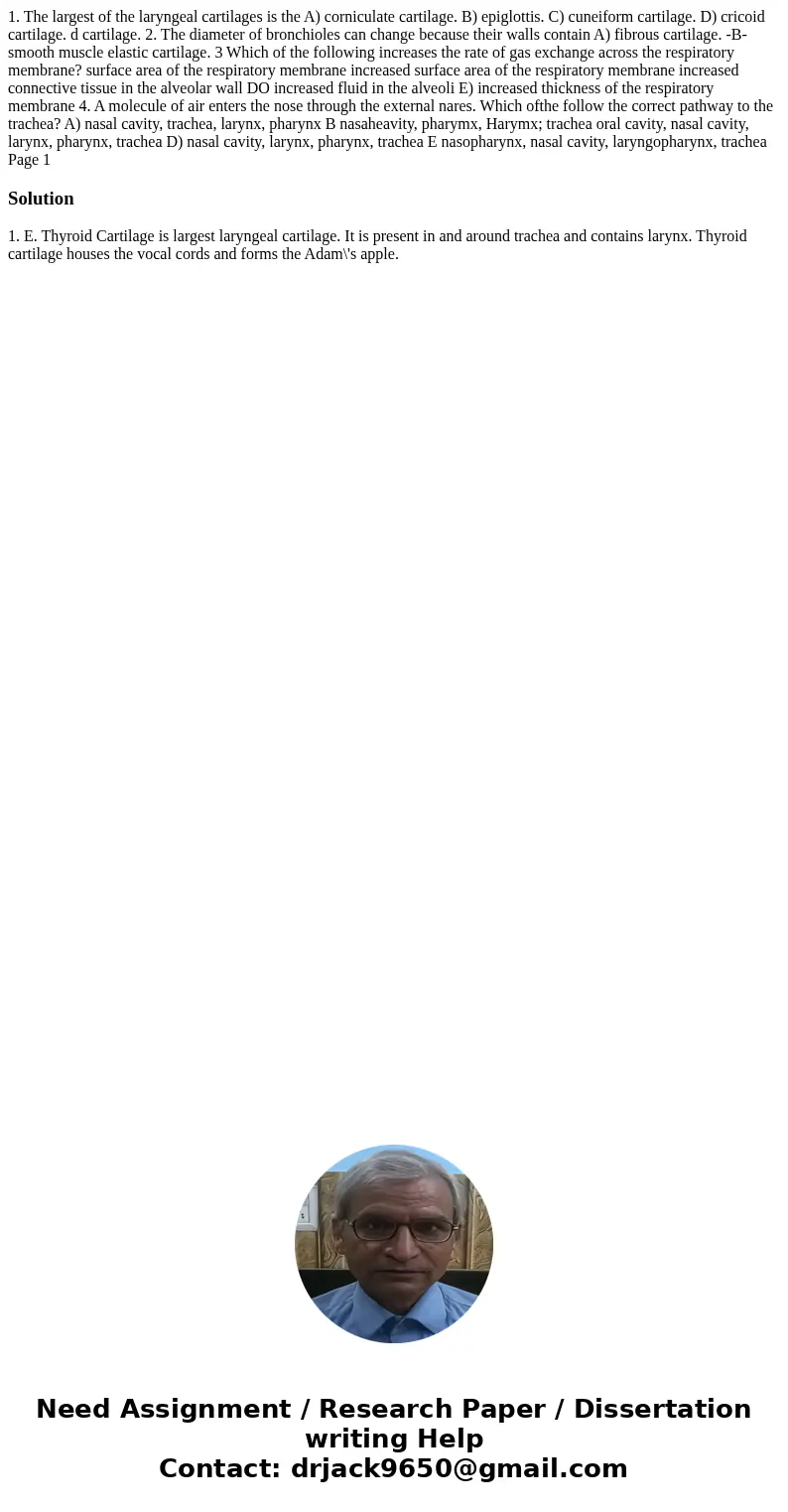1 The largest of the laryngeal cartilages is the A cornicula
1. The largest of the laryngeal cartilages is the A) corniculate cartilage. B) epiglottis. C) cuneiform cartilage. D) cricoid cartilage. d cartilage. 2. The diameter of bronchioles can change because their walls contain A) fibrous cartilage. -B-smooth muscle elastic cartilage. 3 Which of the following increases the rate of gas exchange across the respiratory membrane? surface area of the respiratory membrane increased surface area of the respiratory membrane increased connective tissue in the alveolar wall DO increased fluid in the alveoli E) increased thickness of the respiratory membrane 4. A molecule of air enters the nose through the external nares. Which ofthe follow the correct pathway to the trachea? A) nasal cavity, trachea, larynx, pharynx B nasaheavity, pharymx, Harymx; trachea oral cavity, nasal cavity, larynx, pharynx, trachea D) nasal cavity, larynx, pharynx, trachea E nasopharynx, nasal cavity, laryngopharynx, trachea Page 1 
Solution
1. E. Thyroid Cartilage is largest laryngeal cartilage. It is present in and around trachea and contains larynx. Thyroid cartilage houses the vocal cords and forms the Adam\'s apple.

 Homework Sourse
Homework Sourse